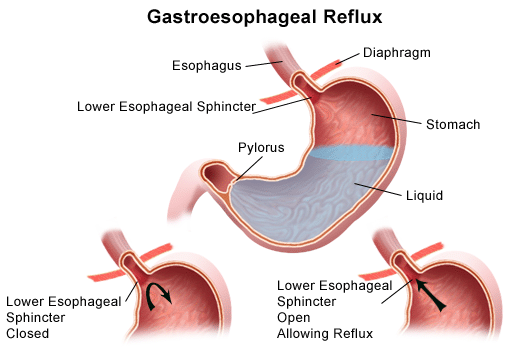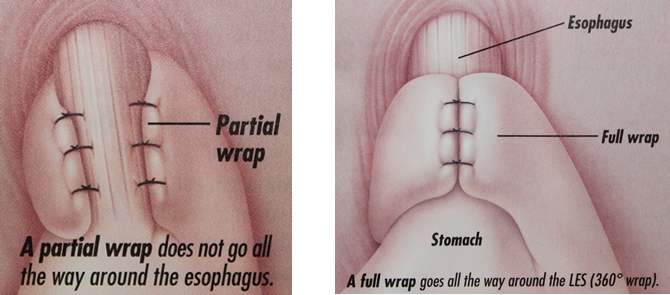
Laparoscopic Anti-Reflux Surgery
(Includes Laparoscopic Toupet & Laparoscopic Nissen)
What is this procedure for?
This surgery treats the condition commonly called gastroesophageal reflux disease or GERD. The symptoms of GERD occur as heartburn after eating a large meal, bending over or lying down. Other symptoms could be difficulty swallowing, chest pain, vomiting, chronic coughing or wheezing. This is caused by a “back up” from the stomach into your esophagus. At the end of your esophagus, you have a small muscle called the lower esophageal sphincter. It acts as a one-way value which allows food and digestive juices to go one way-down.

For various reasons, this sphincter may become weak and allow “reflux” of these contents back into your esophagus. Without treatment, GERD can lead to serious problems, even cancer. Some people may even develop a “hiatal hernia” where part of their stomach has slipped back up into their esophagus.
Diagnosis:
Diagnosis is determined by the patient’s symptoms and various objective tests. The tests may include an esophagram, a ph-monitoring test, esophageal manometry, and an esophageal endoscopy performed by your gastroenterologist.
Treatment:
If medical treatment has been unsuccessful, your doctor may recommend laparoscopic surgery to correct the problem. This procedure is done through four to five incisions on your upper abdomen. The surgeon inflates your abdomen through one of these incisions with a harmless gas in order to fully visualize the area around your lower esophagus. This anti-reflux surgery may consist of repairing your diaphragm, replacing your stomach back into your abdomen and/or wrapping the stomach around the outside of the esophagus.




